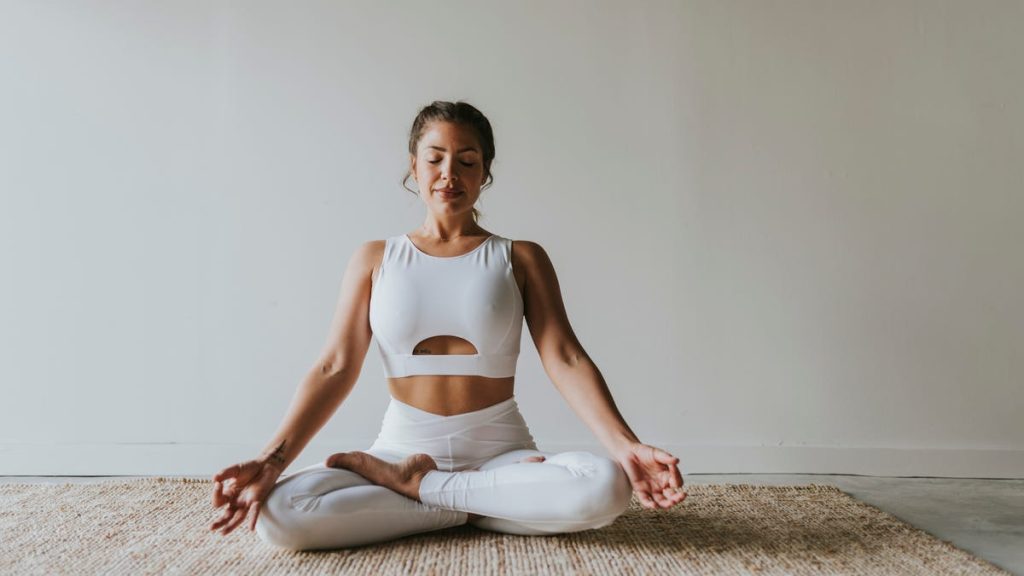Yoga, a practice encompassing physical postures, breathing techniques, and meditation, presents a promising natural sleep aid. Its ability to calm the nervous system and reduce cortisol, the stress hormone, contributes significantly to improved sleep quality. Elevated cortisol levels are often linked to difficulty falling asleep and maintaining sleep throughout the night. By incorporating specific yoga poses into a pre-bedtime routine, individuals can create a conducive environment for relaxation and prepare their bodies for a restful night’s sleep. Research further supports these claims, demonstrating the positive impact of yoga on insomnia symptoms and overall sleep health. Furthermore, yoga can complement traditional treatment methods for sleep disorders and promote overall well-being.
The connection between cortisol and sleep is crucial in understanding the benefits of yoga for sleep. Cortisol, naturally fluctuating throughout the day, typically peaks in the morning and gradually decreases towards the evening. However, factors such as stress, anxiety, and irregular sleep schedules can disrupt this natural rhythm, leading to elevated cortisol levels at night. This hormonal imbalance can interfere with the body’s natural sleep-wake cycle, making it difficult to fall asleep and stay asleep. Yoga, by reducing cortisol levels, helps restore the body’s natural hormonal balance, promoting a more conducive environment for sleep.
Specific yoga poses are particularly effective in promoting relaxation and preparing the body for sleep. These poses typically involve gentle stretching, slow movements, and deep breathing, which collectively help to ease muscle tension, calm the nervous system, and quiet the mind. Poses like Cat-Cow, Forward Fold, Bridge, Happy Baby, Legs-up-the-Wall, Child’s Pose, Seated Twist, Butterfly, and Head-to-Knee are all recommended for their calming effects. When practicing these poses, it’s important to focus on the breath and any areas of tension in the body, allowing for a deeper release and relaxation.
The Cat-Cow pose, initiated on hands and knees, involves alternating between arching and rounding the back in sync with the breath, promoting spinal flexibility and relieving tension. Forward Fold, a simple standing or seated bend, stretches the hamstrings and back, relieving stress and calming the mind. Bridge pose, performed lying on the back with knees bent, gently engages the core and opens the chest, promoting relaxation. Happy Baby, also done lying on the back, involves holding the feet and gently rocking side to side, releasing tension in the lower back and hips.
Legs-up-the-Wall, a restorative pose, involves resting the legs against a wall, promoting circulation and calming the nervous system. Child’s Pose, a resting pose, involves kneeling with the forehead on the floor and arms outstretched, promoting relaxation and releasing tension in the back and shoulders. Seated Twist, performed in a seated position, involves twisting the torso, promoting spinal mobility and relieving tension in the back. Butterfly pose, also seated, involves bringing the soles of the feet together and gently pressing the knees towards the floor, opening the hips and promoting relaxation. Head-to-Knee pose, a seated forward bend, stretches the hamstrings and back, calming the mind and relieving stress.
Beyond these specific poses, the practice of yoga as a whole contributes to better sleep hygiene. Regular yoga practice can help regulate the circadian rhythm, the body’s natural sleep-wake cycle. This regulation improves the timing and quality of sleep, making it easier to fall asleep and wake up feeling refreshed. Furthermore, yoga can reduce stress and anxiety, two common culprits of sleep disturbances. By managing stress levels through yoga, individuals create a more peaceful and conducive environment for sleep.
Incorporating a 20-30 minute yoga sequence before bed can significantly improve sleep quality. This pre-bedtime routine provides a dedicated time for relaxation and winding down, signaling to the body that it’s time to prepare for sleep. The combination of gentle stretches, deep breathing, and mindfulness cultivated during a yoga practice helps to quiet the mind, release physical tension, and promote a sense of calm, all of which are essential for a restful night’s sleep. Consistency is key when using yoga for sleep improvement; regular practice yields the most significant benefits.
Yoga, although beneficial for many, may not be suitable for everyone. Individuals with certain medical conditions, injuries, or physical limitations should consult with a healthcare professional before starting a yoga practice. Pregnant women should also seek guidance from their doctor or a qualified prenatal yoga instructor. Choosing a qualified yoga instructor is essential, especially for beginners, to ensure proper alignment and avoid potential injuries. Listening to your body is paramount during any yoga practice. If any pose causes pain or discomfort, it’s crucial to stop and modify or avoid the pose altogether.
While yoga can be a powerful tool for improving sleep, it is often most effective when combined with other healthy sleep habits. Maintaining a regular sleep schedule, creating a relaxing bedtime routine, and optimizing the sleep environment can further enhance the benefits of yoga for sleep. Avoiding caffeine and alcohol before bed, limiting screen time in the evening, and ensuring a dark, quiet, and cool bedroom can contribute to a more restful night’s sleep. By adopting a holistic approach to sleep hygiene, individuals can maximize their chances of achieving quality sleep and experiencing the numerous health benefits it provides.

